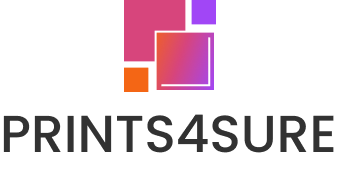Explore the next frontier in personalized home decoration with a focus on 3D printing technology that allows consumers to create custom wall art, transforming personal spaces into unique reflections of individual taste.
This innovative approach to interior design not only democratizes the creation of art but also introduces a level of customization previously unseen in the home decor industry.
Through the power of 3D printing, every detail, from intricate patterns to bespoke designs, can be tailored to mirror the homeowner's personality, interests, and aesthetic preferences, thus elevating the concept of personal space to an art form in and of itself.
Introduction to 3D Printing in Home Decor
3D printing technology, a marvel of modern engineering, has rapidly evolved from its initial industrial applications to penetrate the consumer market, bringing with it the dawn of personalized home decoration. This progression marks a significant leap in how individuals approach the aesthetic of their living spaces.
With the introduction of 3D-printed wall art, the technology offers an unparalleled level of customization, allowing for the physical manifestation of unique ideas and personal flair. The rise of personalized home decoration signifies a shift towards more individualized living environments, reflecting personal journeys, experiences, and tastes.
Despite the growing demand for tailored home decor solutions, the market for custom 3D-printed wall art still needs to catch up. This presents a golden opportunity for innovators and entrepreneurs to explore this niche, satisfying the craving for distinct, meaningful pieces that homeowners seek to incorporate into their personal spaces.
Simplified Guide to Creating Custom 3D Wall Art
Creating custom 3D wall art is a fascinating endeavor that starts with a unique concept inspired by personal tastes or interests. Here’s a simplified guide:
- Conceptualization: Begin by sketching out your vision, drawing inspiration from anything that speaks to you personally.
- Design and Modeling: Utilize 3D modeling software like Blender or SketchUp to digitize your concept. This involves detailed modeling to bring your vision to life.
- File and Print Preparation: Convert your model into a print-ready format, then use slicing software to prepare it for printing. Popular choices include Cura or Simplify3D.
- Printing and Material Selection: Choose a material—PLA for ease or ABS for durability—and print your design. Adjust your printer settings as necessary to ensure quality output.
- Post-Processing: Finalize your piece with any required sanding, painting, or sealing, personalizing it further to match your envisioned outcome.
Benefits of Custom 3D Printed Wall Art
Custom 3D printed wall art offers a compelling blend of advantages, from bespoke personalization to environmental sustainability. It allows for unparalleled customization, letting individuals infuse spaces with their unique personality and style through one-of-a-kind designs.
The technology behind 3D printing ensures not only the creation of visually captivating pieces but also items of lasting durability. Materials like PLA and ABS contribute to both the quality and the environmental friendliness of these pieces, with the former being a biodegradable option that underscores the eco-conscious aspect of modern home decor.
This convergence of personal expression, quality, and sustainability makes custom 3D-printed wall art a captivating choice for contemporary interiors.
Design Inspirations and Ideas
Exploring custom 3D-printed wall art uncovers endless possibilities, all rooted in individual interests and aesthetics. For nature buffs, envisioning detailed landscapes or beloved creatures adds a personal touch, while those fascinated by the stars might prefer constellations or astronomical elements that glow with specific lighting.
Modern enthusiasts may gravitate towards sleek geometric patterns or abstract forms. It's about crafting spaces that not only dazzle aesthetically but also echo personal narratives and passions.
Drawing from personal interests, such as musical symbols for audiophiles or literary quotes for book lovers, ensures each piece is a meaningful addition to one's decor—integration with the room's existing style through chosen color schemes or materials further tailors the space.
Engaging with artists for unique designs or tweaking pre-existing models offers varied paths to achieving a customized look, with many turning to the rich resources available in online 3D printing communities. The essence of custom 3D printed wall art lies in creating spaces that are not just visually appealing but are imbued with personal stories and character.
The Future of Home Decor and 3D Printing
3D printing technology is transforming home decor, making the dream of fully personalized living spaces a tangible reality. It enables the customization of not just wall art but also furniture, lighting, and even everyday items, allowing for a uniquely tailored environment. Future trends suggest the potential for bespoke furniture pieces and lighting solutions, reflecting personal tastes more accurately.
Advances in intelligent 3D printed decor and sustainable materials are poised to offer even more possibilities for creative expression and functional design in home decoration. This shift highlights a move towards a future where the distinction between consumer and creator blurs, empowering individuals to design their spaces with unparalleled originality.
Challenges and Considerations
While exploring the innovative realm of custom 3D-printed wall art, it's essential to weigh certain factors carefully.
Cost and Accessibility: The initial investment in 3D printers and materials might appear steep, but advancements in technology have rendered 3D printing more attainable. The price of producing custom wall art depends significantly on the project's scope, design complexity, and material choice.
Mounting and Installation: Consider the weight and dimensions of your artwork, as these dictate the appropriate mounting methods. Light pieces may use standard hardware, but larger installations might require more robust support systems.
Legal Framework: When drawing inspiration from existing art, ensure you're not violating any copyright laws. Opt for original creations or secure permissions for use to steer clear of infringement issues. Engaging with open-source designs can offer a pathway to customization without legal pitfalls.







